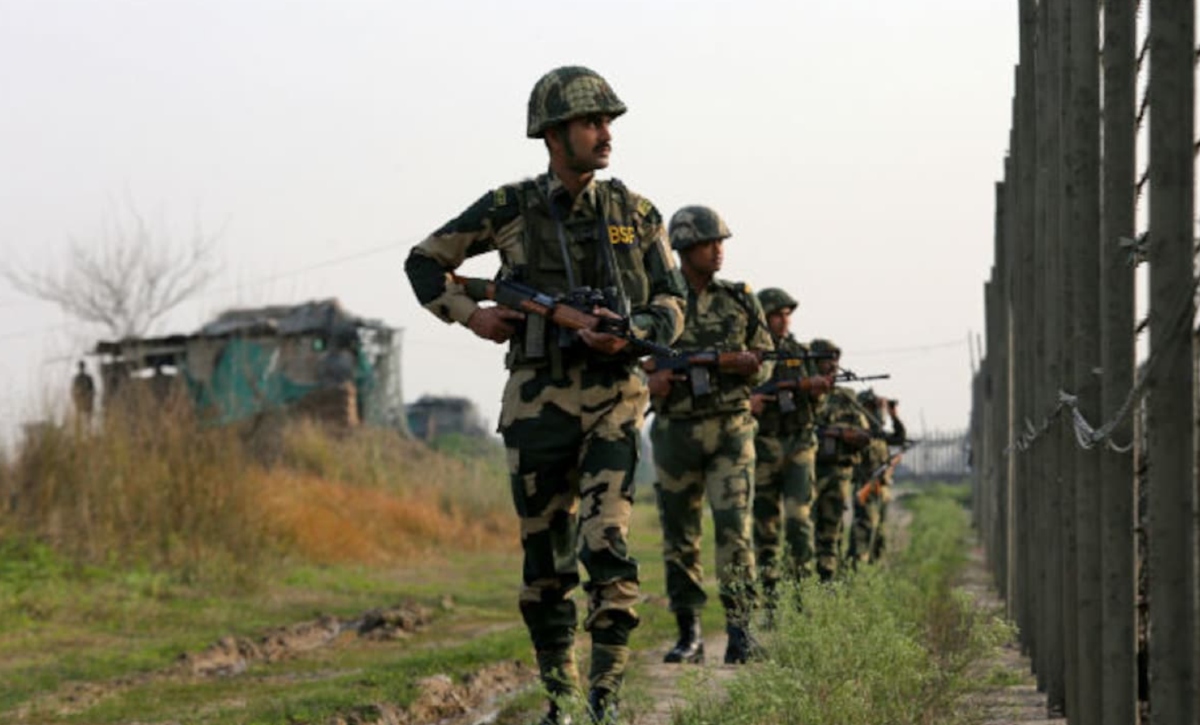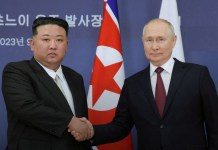While India-Pakistan ties remain tense, the border between the two has been calm and free of flare-ups like the ones between 2016 and 2019. However, neither country has seen a corresponding enhancement in their relationship. This stagnant situation is likely to breed another escalation if bilateral ties are not improved by building upon a firing-free Line of Control (LoC).
This peculiar situation was noted in a recent report from the US’s Director of National Intelligence (DNI), which reviewed the various flashpoints worldwide. In other words, the report suggests that the frosty ties between the two are not accompanied by the tense military overlap this time around.
The DNI’s Annual Threat Assessment has undertaken an overview of America’s prime strategic rivals, such as Russia, China, Iran, and North Korea, and multiple flashpoints, like the ongoing war in Gaza.
It classifies the India-Pakistan and Indo-Chinese situations as potential ‘Interstate Conflicts’. China’s militarized territorial claims in the South and East China Seas and the Azerbaijan-Armenia rivalry are other regions in this category.
It also discusses ‘Transnational Issues,’ which include the proliferation of ‘Disruptive Technologies’ like Artificial Intelligence (AI), cyber warfare, military-oriented stealth technologies, biotechnology, and Machine Learning (ML).
‘No Violence, But No Improvement in Ties Either’
The report said that New Delhi and Islamabad are “inclined” to “sustain the current fragile calm” in their relationship following their renewal of a cease-fire along the Line of Control in early 2021.
However, “neither side” has used this “period of calm” to “rebuild their bilateral ties.” On the contrary, each government has “focused on more pressing domestic priorities.” In India, this includes “election perpetrations and campaigning,” while Pakistan is engaged in concerns “over rising militant attacks in its west.”
Media reports, too, have noted how the ceasefire has endured and how both sides have strictly adhered to the agreement to keep tensions on the LoC low. By February 2023, no casualties had been reported on either side in cross-border firing in Jammu and Kashmir. “The army’s robust counter-infiltration mechanism has also dramatically brought down the number of attempts of infiltration along the LoC,” said a report on NDTV.
Both sides have also indicated how they are equally militarily and strategically vulnerable and how a full-scale war might harm them both. The 2016 ‘surgical strikes’ and the 2019 IAF strike on the Balakote terror camp in response to the Pulwama attacks witnessed them tacitly disengaging after trading brief fisticuffs.
Another instance where both sides displayed a mutual desire not to let military clashes boil over was the March 9, 2022, accidental firing of a BrahMos supersonic cruise missile into Pakistan. While Islamabad objectively revealed the debris of the missile in its territory without hyperbole and sharp condemnation, India, too, attributed the incident to a technical malfunction and routine maintenance.
Leading press outlets also did not feature the usual rhetoric, ridicule, or tropes in their coverage of each other’s national political and strategic developments.
For instance, leading Pakistani media outlets, while reporting the LCA Tejas crash, did mention that this was the fighter jet’s first crash since 2001, acknowledging its hitherto unblemished safety record. The reports mention the aircraft’s troubled development history, beset by delays, which, however, has been acknowledged by Indian analysts and media, too.
Likewise, new President Asif Ali Zardari’s pledge to forgo his salary during his tenure received positive coverage in leading Indian media houses, which recognized the dire economic conditions in the country.
Moreover, consistent outreach and olive branches to India to repair came from across the political spectrum in Pakistan—Imran Khan’s Pakistan Tehreek-e-Insaf (PTI), Pakistan Muslim League-Nawaz (PML-N), and the Pakistan Army. These developments indicate that the desire for de-escalation is mutual among a significant section of the countries’ leadership.
But the DNI still warned: “Pakistan’s long history of supporting anti-India militant groups and India’s increased willingness, under the leadership of Prime Minister Narendra Modi, to respond with military force to perceived or real Pakistani provocations raise the risk of escalation during a crisis. There remains the potential for an event to trigger a rapid escalation.”
Experts Agree
Other assessments by independent experts too broadly align with the DNI’s conclusion. A report by Christopher Clary at the United States Institute for Peace (USIP) noted how other pressing strategic threats faced individually by India and Pakistan have forced them both to invest in de-escalatory measures.

“Two factors appear essential for an enduring LOC ceasefire: senior-level buy-in in both capitals and a heightened third-party threat faced by at least one of the rival states,” the report said. For India, the border standoff with China in Ladakh has entered its fifth year. Beijing has no signs of withdrawing the positions it has annexed.
In Pakistan, meanwhile, the restive Balochistan province has seen a resurgence of its anti-Islamabad and separatist insurgency, led by outfits like the Baloch Liberation Army (BLA). This region also hosts the flagship project of the Chinese Belt and Road Initiative (BRI), the nearly $60 billion worth of China Pakistan Economic Corridor (CPEC).
Pakistan’s ties with Afghanistan, too, had been at their lowest. The Pakistan Army frequently traded fire with the Taliban in 2022 over unresolved issues pertaining to the Durand Line border and policies regarding the movement of Pashtun refugees.
However, despite its endurance, the 2021 ceasefire remains “fragile and vulnerable” to events and circumstances such as “terrorist attacks, changes in political or military leadership, and shifting regional relations.” Prospects for bolstering the ceasefire include reopening overt dialogue channels, institutionalizing normalcy on the LOC, and exploring other military confidence-building measures.
- The author can be reached at satamp@gmail.com
- Views personal of the Author
- Follow EurAsian Times on Google News




